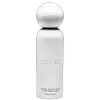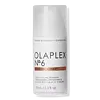What's inside
What's inside
 Key Ingredients
Key Ingredients

No key ingredients
 Benefits
Benefits

 Concerns
Concerns

 Ingredients Side-by-side
Ingredients Side-by-side

Water
Skin ConditioningGlycerin
HumectantCetearyl Alcohol
EmollientHydrogenated Ethylhexyl Olivate
EmollientBehentrimonium Chloride
PreservativeButyrospermum Parkii Butter
Skin ConditioningC12-15 Alkyl Benzoate
AntimicrobialGlyceryl Stearate
EmollientGlycol Stearate
EmollientLactobacillus
Skin ConditioningHydrogenated Olive Oil Unsaponifiables
EmollientHydroxypropyl Bis-Hydroxyethyldimonium Chloride
HumectantPolyquaternium-4
Helianthus Annuus Seed Extract
Skin ConditioningC9-12 Alkane
SolventSqualane
EmollientArgania Spinosa Kernel Oil
EmollientAdansonia Digitata Seed Oil
EmollientNigella Sativa Seed Oil
EmollientCitrullus Lanatus Seed Oil
EmollientMoringa Oleifera Seed Oil
EmollientBoswellia Carterii Oil
MaskingHyssopus Officinalis Extract
MaskingCoco-Caprylate/Caprate
EmollientHydroxyethylcellulose
Emulsion StabilisingHibiscus Rosa-Sinensis Flower Extract
HumectantChlorella Ferment
Skin ConditioningTremella Fuciformis Polysaccharide
Emulsion StabilisingPanthenol
Skin ConditioningOlea Europaea Fruit Oil
MaskingSodium Laneth-40 Maleate/Styrene Sulfonate Copolymer
Parfum
MaskingCaramel
Cosmetic Colorant1,2-Hexanediol
Skin ConditioningEthylhexylglycerin
Skin ConditioningPhenoxyethanol
PreservativePentylene Glycol
Skin ConditioningBenzyl Alcohol
PerfumingPotassium Sorbate
PreservativeDisodium Phosphate
BufferingSodium Phosphate
BufferingPolysorbate 60
EmulsifyingAlcohol
AntimicrobialLinalool
PerfumingLimonene
PerfumingCoumarin
PerfumingCitronellol
PerfumingAlpha-Isomethyl Ionone
PerfumingWater, Glycerin, Cetearyl Alcohol, Hydrogenated Ethylhexyl Olivate, Behentrimonium Chloride, Butyrospermum Parkii Butter, C12-15 Alkyl Benzoate, Glyceryl Stearate, Glycol Stearate, Lactobacillus, Hydrogenated Olive Oil Unsaponifiables, Hydroxypropyl Bis-Hydroxyethyldimonium Chloride, Polyquaternium-4, Helianthus Annuus Seed Extract, C9-12 Alkane, Squalane, Argania Spinosa Kernel Oil, Adansonia Digitata Seed Oil, Nigella Sativa Seed Oil, Citrullus Lanatus Seed Oil, Moringa Oleifera Seed Oil, Boswellia Carterii Oil, Hyssopus Officinalis Extract, Coco-Caprylate/Caprate, Hydroxyethylcellulose, Hibiscus Rosa-Sinensis Flower Extract, Chlorella Ferment, Tremella Fuciformis Polysaccharide, Panthenol, Olea Europaea Fruit Oil, Sodium Laneth-40 Maleate/Styrene Sulfonate Copolymer, Parfum, Caramel, 1,2-Hexanediol, Ethylhexylglycerin, Phenoxyethanol, Pentylene Glycol, Benzyl Alcohol, Potassium Sorbate, Disodium Phosphate, Sodium Phosphate, Polysorbate 60, Alcohol, Linalool, Limonene, Coumarin, Citronellol, Alpha-Isomethyl Ionone
Water
Skin ConditioningCetearyl Alcohol
EmollientDimethicone
EmollientIsohexadecane
EmollientCoco-Caprylate
EmollientNeopentyl Glycol Diheptanoate
EmollientBehentrimonium Chloride
PreservativeIsododecane
EmollientPhenyl Trimethicone
Skin ConditioningPropanediol
SolventBis-Aminopropyl Diglycol Dimaleate
Skin ConditioningParfum
MaskingCetrimonium Chloride
AntimicrobialPhenoxyethanol
PreservativeGlyceryl Stearate
EmollientIsopropyl Alcohol
SolventHydroxyethylcellulose
Emulsion StabilisingHydroxypropyl Guar
Emulsion StabilisingSodium Stearoyl Lactylate
EmulsifyingHydroxypropyl Cyclodextrin
MaskingHexyl Cinnamal
PerfumingLimonene
PerfumingCitral
PerfumingHydrolyzed Vegetable Protein Pg-Propyl Silanetriol
Skin ConditioningDisodium EDTA
Linalool
PerfumingCitronellol
PerfumingIodopropynyl Butylcarbamate
PreservativeHydroxycitronellal
PerfumingEtidronic Acid
Tocopherol
AntioxidantGeraniol
PerfumingPotassium Sorbate
PreservativeHelianthus Annuus Seed Oil
EmollientPhytantriol
HumectantSodium Benzoate
MaskingPseudozyma Epicola/Camellia Sinensis Seed Oil Ferment Extract Filtrate
HumectantTocopheryl Acetate
AntioxidantVitis Vinifera Seed Oil
EmollientAloe Barbadensis Leaf Juice
Skin ConditioningPanthenol
Skin ConditioningCitric Acid
BufferingGigartina Stellata Extract
Skin ProtectingChondrus Crispus Extract
Skin ConditioningAscorbic Acid
AntioxidantCocos Nucifera Oil
MaskingWater, Cetearyl Alcohol, Dimethicone, Isohexadecane, Coco-Caprylate, Neopentyl Glycol Diheptanoate, Behentrimonium Chloride, Isododecane, Phenyl Trimethicone, Propanediol, Bis-Aminopropyl Diglycol Dimaleate, Parfum, Cetrimonium Chloride, Phenoxyethanol, Glyceryl Stearate, Isopropyl Alcohol, Hydroxyethylcellulose, Hydroxypropyl Guar, Sodium Stearoyl Lactylate, Hydroxypropyl Cyclodextrin, Hexyl Cinnamal, Limonene, Citral, Hydrolyzed Vegetable Protein Pg-Propyl Silanetriol, Disodium EDTA, Linalool, Citronellol, Iodopropynyl Butylcarbamate, Hydroxycitronellal, Etidronic Acid, Tocopherol, Geraniol, Potassium Sorbate, Helianthus Annuus Seed Oil, Phytantriol, Sodium Benzoate, Pseudozyma Epicola/Camellia Sinensis Seed Oil Ferment Extract Filtrate, Tocopheryl Acetate, Vitis Vinifera Seed Oil, Aloe Barbadensis Leaf Juice, Panthenol, Citric Acid, Gigartina Stellata Extract, Chondrus Crispus Extract, Ascorbic Acid, Cocos Nucifera Oil
 Reviews
Reviews

Ingredients Explained
These ingredients are found in both products.
Ingredients higher up in an ingredient list are typically present in a larger amount.
This ingredient is a preservative and often used for it's anti-static properties. You'll most likely see this ingredient in hair conditioners.
It does not cause irritation or sensitization in leave-on products at 1-5%.
Cetearyl alcohol is a mixture of two fatty alcohols: cetyl alcohol and stearyl alcohol. It is mainly used as an emulsifier. Emulsifiers help prevent the separation of oils and products. Due to its composition, it can also be used to thicken a product or help create foam.
Cetearyl alcohol is an emollient. Emollients help soothe and hydrate the skin by trapping moisture.
Studies show Cetearyl alcohol is non-toxic and non-irritating. The FDA allows products labeled "alcohol-free" to have fatty alcohols.
This ingredient is usually derived from plant oils such as palm, vegetable, or coconut oils. There is debate on whether this ingredient will cause acne.
Due to the fatty acid base, this ingredient may not be Malassezia folliculitis safe.
Learn more about Cetearyl AlcoholCitronellol is used to add fragrance/parfum to a product. It is often derived from plants such as roses. In fact, it can be found in many essential oils including geranium, lavender, neroli, and more. The scent of Citronellol is often described as "fresh, grassy, and citrus-like".
Since the Citronellol molecule is already unstable, Citronellol becomes irritating on the skin when exposed to air.
Citronellol is a modified terpene. Terpenes are unsaturated hydrocarbons found in plants. They make up the primary part of essential oils.
Citronellol is not able to be absorbed into deeper layers of the skin. It has low permeability,
Citronellol is also a natural insect repellent.
Learn more about CitronellolGlyceryl Stearate is a mix of glycerin and stearic acid.
It is used to stabilize the mixing of water and oil ingredients. By preventing these ingredients from separating, it can help elongate shelf life. It can also help thicken the product's texture.
As an emollient, it helps soften skin and supports barrier-replenishing ingredients.
In cosmetics, Glyceryl Stearate is often made from vegetable oils or synthetically produced.
This ingredient may not be fungal-acne safe
Fun fact: The human body also creates Glyceryl Stearate naturally.
Learn more about Glyceryl StearateHydroxyethylcellulose is used to improve the texture of products. It is created from a chemical reaction involving ethylene oxide and alkali-cellulose. Cellulose is a sugar found in plant cell walls and help give plants structure.
This ingredient helps stabilize products by preventing ingredients from separating. It can also help thicken the texture of a product.
This ingredient can also be found in pill medicines to help our bodies digest other ingredients.
Learn more about HydroxyethylcelluloseLimonene is a fragrance that adds scent and taste to a formulation.
It's found in the peel oil of citrus fruits and other plants such as lavender and eucalyptus. The scent of limonene is generally described as "sweet citrus".
Limonene acts as an antioxidant, meaning it helps neutralize free radicals.
When exposed to air, oxidized limonene may sensitize the skin. Because of this, limonene is often avoided by people with sensitive skin.
The term 'fragrance' is not regulated in many countries. In many cases, it is up to the brand to define this term. For instance, many brands choose to label themselves as "fragrance-free" because they are not using synthetic fragrances. However, their products may still contain ingredients such as essential oils that are considered a fragrance.
Learn more about LimoneneLinalool is a fragrance and helps add scent to products. It's derived from common plants such as cinnamon, mint, citrus, and lavender.
Like Limonene, this ingredient oxidizes when exposed to air. Oxidized linalool can cause allergies and skin sensitivity.
This ingredient has a scent that is floral, spicy tropical, and citrus-like.
Learn more about LinaloolPanthenol is a common ingredient that helps hydrate and soothe the skin. It is found naturally in our skin and hair.
There are two forms of panthenol: D and L.
D-panthenol is also known as dexpanthenol. Most cosmetics use dexpanthenol or a mixture of D and L-panthenol.
Panthenol is famous due to its ability to go deeper into the skin's layers. Using this ingredient has numerous pros (and no cons):
Like hyaluronic acid, panthenol is a humectant. Humectants are able to bind and hold large amounts of water to keep skin hydrated.
This ingredient works well for wound healing. It works by increasing tissue in the wound and helps close open wounds.
Once oxidized, panthenol converts to pantothenic acid. Panthothenic acid is found in all living cells.
This ingredient is also referred to as pro-vitamin B5.
Learn more about PanthenolParfum is a catch-all term for an ingredient or more that is used to give a scent to products.
Also called "fragrance", this ingredient can be a blend of hundreds of chemicals or plant oils. This means every product with "fragrance" or "parfum" in the ingredients list is a different mixture.
For instance, Habanolide is a proprietary trade name for a specific aroma chemical. When used as a fragrance ingredient in cosmetics, most aroma chemicals fall under the broad labeling category of “FRAGRANCE” or “PARFUM” according to EU and US regulations.
The term 'parfum' or 'fragrance' is not regulated in many countries. In many cases, it is up to the brand to define this term.
For instance, many brands choose to label themselves as "fragrance-free" because they are not using synthetic fragrances. However, their products may still contain ingredients such as essential oils that are considered a fragrance by INCI standards.
One example is Calendula flower extract. Calendula is an essential oil that still imparts a scent or 'fragrance'.
Depending on the blend, the ingredients in the mixture can cause allergies and sensitivities on the skin. Some ingredients that are known EU allergens include linalool and citronellol.
Parfum can also be used to mask or cover an unpleasant scent.
The bottom line is: not all fragrances/parfum/ingredients are created equally. If you are worried about fragrances, we recommend taking a closer look at an ingredient. And of course, we always recommend speaking with a professional.
Learn more about ParfumPhenoxyethanol is a preservative that has germicide, antimicrobial, and aromatic properties. Studies show that phenoxyethanol can prevent microbial growth. By itself, it has a scent that is similar to that of a rose.
It's often used in formulations along with Caprylyl Glycol to preserve the shelf life of products.
Potassium Sorbate is a preservative used to prevent yeast and mold in products. It is commonly found in both cosmetic and food products.
This ingredient comes from potassium salt derived from sorbic acid. Sorbic acid is a natural antibiotic and effective against fungus.
Both potassium sorbate and sorbic acid can be found in baked goods, cheeses, dried meats, dried fruit, ice cream, pickles, wine, yogurt, and more.
You'll often find this ingredient used with other preservatives.
Learn more about Potassium SorbateWater. It's the most common cosmetic ingredient of all. You'll usually see it at the top of ingredient lists, meaning that it makes up the largest part of the product.
So why is it so popular? Water most often acts as a solvent - this means that it helps dissolve other ingredients into the formulation.
You'll also recognize water as that liquid we all need to stay alive. If you see this, drink a glass of water. Stay hydrated!
Learn more about Water